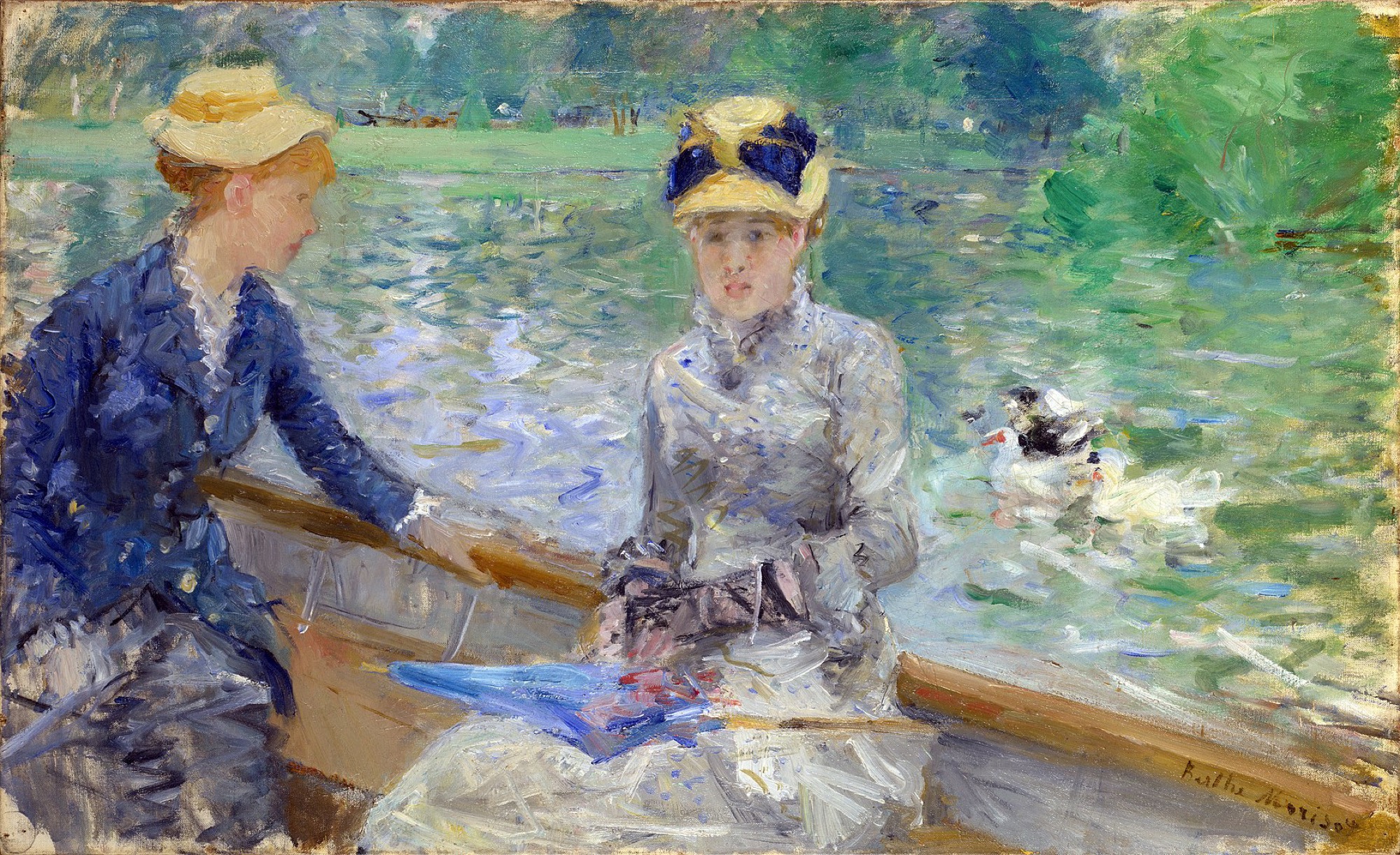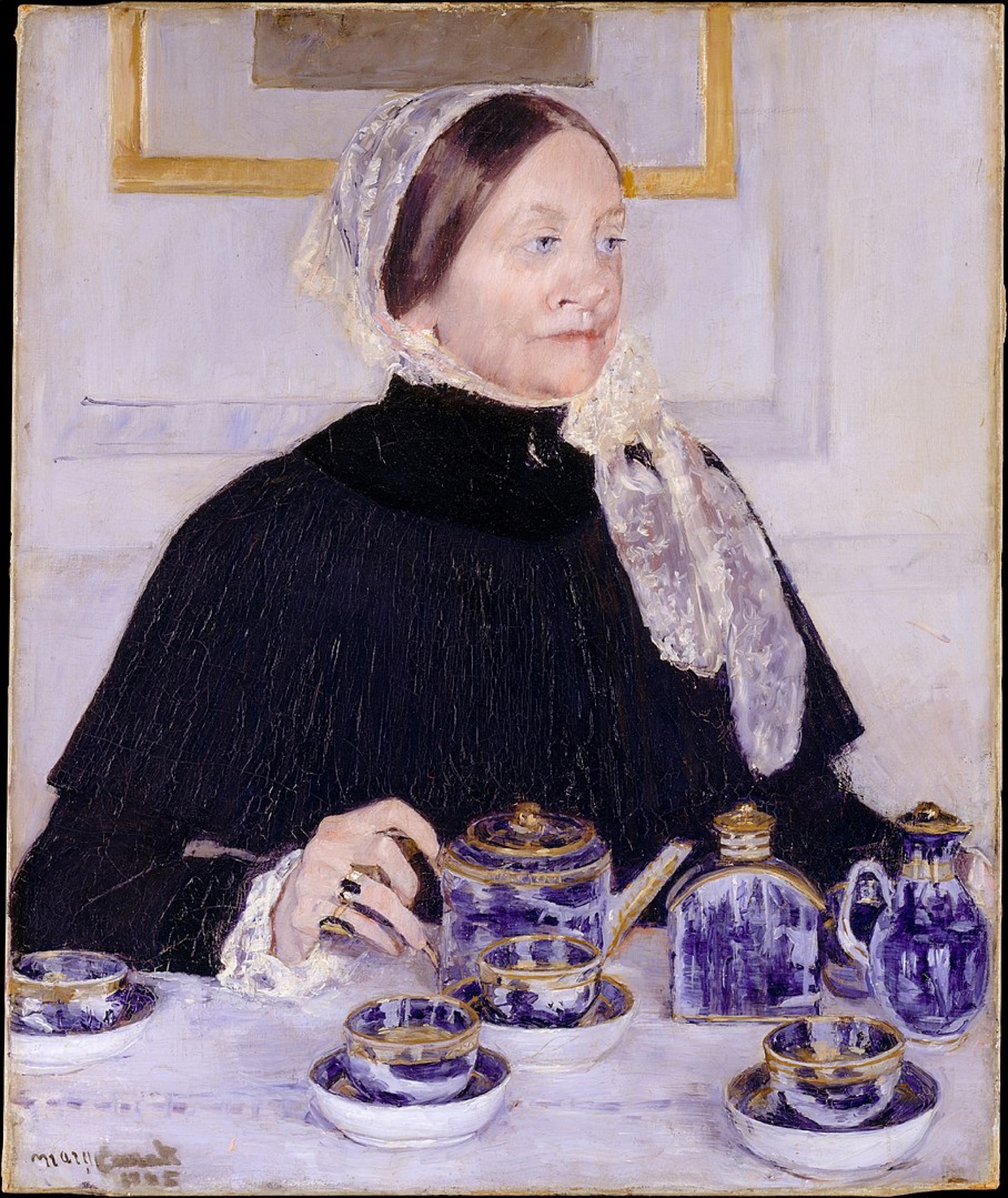Jane Sutherland, Obstruction, Box Hill, 1887
Rex Butler
I was recently scrolling through the images for the Heidelberg School lecture I usually give for my Australian Art class at university when I suddenly stopped in my tracks. Why hadn’t I noticed it before?
There towards the end, after telling the heroic story of the rise of a distinctive style of Australian art and the holding of the famous 9 x 5 Impressions show at Buxton’s Art Gallery on 17 August 1889, were slides of the Australian women Impressionists Elizabeth Parsons, Emma Minnie Boyd and Jane Sutherland.
It’s token, I realise that. But I have only one hour—ridiculous—and I figure it’s best to give first-time students to Australian art the canonical story before proceeding to challenge it. As a result, the women artists are still at the end, with a promise they will be taken up in more detail in the tutorial.
But on this particular day, re-familiarising myself with the works before recording my COVID-19 online video, I held my finger over my mouse, transfixed by what I was looking at.
Undoubtedly attuned by the paintings of Berthe Morisot I show my first-year Modern Art class (of course, at the end of the Impressionism lecture), Jane Sutherland’s Obstruction, Box Hill (1887), now in the Art Gallery of Ballarat, struck me with the force of revelation.
In first-year, we look at Morisot’s Hanging the Laundry Out to Dry (1875), which shows a group of laundresses hanging up the washing, with the very clothes they put on the line fencing them in and stopping them getting to the town depicted behind them. They are prisoners of a sort, even if they are shown imprisoning themselves (Morisot’s dabs of paint are exactly equivalent to the clothes and sheets that hem the women in).

We see something similar in Morisot’s Summer Day (1879), which depicts two upper-class young women in a rowboat, undoubtedly steered by a man, looking nervously over the side to the wide world beyond (and whose brushstrokes are notably looser and less controlled than those that make up the women inside the boat). Again, it is a striking image of the confinement of women, this time not the lower-class laundresses of Hanging the Laundry but the upper-class ones of Morisot’s own social milieu.
Of course, this depiction of women’s social experience is exactly what generations of feminist art historians, led by Linda Nochlin and Griselda Pollock, have pointed us to in the work of the female French Impressionists. In my first-year course on the reading list, along with TJ Clark’s The Painting of Modern Life, I always include Nochlin’s ‘Mary Cassatt’s Modernity’, which reads Cassatt’s Lady at the Tea Table (1883) as a powerful image of feminine self-empowerment, with the aristocratic-looking woman (who, as is often the case, does not look unlike Cassatt herself and was in fact a relative) aligned to the artist in her ability to arrange the interior décor, in this case the gilded blue-and-white porcelain tea cups, into an aesthetically pleasing arrangement. It is the declaration of a certain interior space, inaccessible to men or at least largely unknown by them, a particular realm of feeling and experience held out against the exterior world, from which women were largely excluded at the time.

All this, I suddenly realised, was to be seen in Sutherland’s Obstruction. The work was originally shown at the Australian Artists Association Winter Exhibition in 1887, also held at Buxton’s Art Gallery, where it received positive if patronising attention in the ‘Social Gossip’ column of the Melbourne Leader of 15 October that year:
Obstruction is the name given by Miss Jane Sutherland to her pretty little picture, which represents a small child in a large sun bonnet on her way to school, where she is brought to a full stop by the appearance of a cow which is facing her on the other side of the fence.
It is a reading of the work that has persisted unchallenged into the present day. For example, the Education Resource for the 2007 Australian Impressionism show at the National Gallery of Victoria, which notably included Sutherland as the only other artist to the “big four” of the Heidelberg School—Tom Roberts, Arthur Streeton, Charles Conder and Frederick McCubbin—states:
The little girl’s path is blocked, not by the Australian bush, where she seems to be quite at home, but by the bull on the other side of the fence. Sutherland’s painting is a reminder that the bushland that the artists painted (near Box Hill) was a small pocket of bush in an area that was already settled, cultivated farming land.
But the painting can be read very differently. What if, I thought to myself as I scrolled through my slides that morning, it wasn’t simply a matter of that schoolgirl being stopped from getting to school but stopped from getting outside at all? What if she was not so much faced by that—notably female—cow, but was herself something of another cow, just as fenced in and domesticated? In other words, that little girl is facing herself when she stands there—in her paddock is some corrugated iron, the symbol of the shed or house—and the fence is going to keep her locked inside, like the hung-out-to-dry clothing of Morisot’s laundresses. She can only stare wistfully out, like the cow, over the other side of the fence; but over there she is only going to see herself reflected back, as though she were looking into a mirror in some interior space.

The image suddenly becomes claustrophobic, immersive, not just about the way white Australians do not belong in the bush, like the young woman of McCubbin’s Lost (1886)—though that too—but more particularly about the social situation of women in the new Australia.
Can we imagine Sutherland actually saying this, or intending it? Are we sure we are not just reading backwards, imputing to the work our contemporary social concerns and preoccupations? Are we certain we are not engaging in some kind of special pleading, making something of an exception for Sutherland, as though she were somehow out of her own time? Or must we posit some kind of artistic unconscious, as though her work could express certain repressed truths of her culture, even though its maker may not have been aware of them herself? (The same kind of questions have been asked by art historians seeing in John Glover’s tortured trees and tree stumps displaced memorials for the Aboriginal Tasmanians who had been forced off their land and transported to Flinders Island.)
We can point to all kinds of suggestive biographical evidence: the fact that Sutherland was born in New York and must always have felt something of an outsider in colonial Victoria; the fact that she was supported by her father in becoming an artist and remained unmarried; the fact that she was one of the first women to enrol at the National Gallery School and one of the first female members of the Buonarotti Club that met at Young and Jackson Hotel.
But all of this must remain conjecture—and so much of the possible evidence of Sutherland’s life was lost when a careless relative burnt nearly all of her personal effects after her death. All that remains is the evidence of the picture and what we see before us.
Like the French women Impressionists, there are all kinds of images by the Australian women Impressionists of women’s domestic life and the interior spaces to which they were confined—Emma Minnie Boyd’s Afternoon Tea (1888), showing two women taking tea, and Florence Fuller’s Inseparables (1891), depicting a young woman reading a book, are two that spring to mind. But few are as polemical as Sutherland’s Obstruction—and the title, I suggest, is a giveaway.
What to do now that I saw all this in Sutherland’s painting? Where to put it in my list of slides? Up the top? At the back? Somewhere in the middle? Can not Obstruction now strike us as one of the strangest—and strongest—works in all of Australian art, as weird in its way as Joan Lindsay’s Picnic at Hanging Rock, another great turn-of-the-century story—which ultimately ends with alien abduction—about women’s fear of, and desire for, the great outdoors.
Fittingly, I might leave the final words here to Sutherland scholar Juliette Peers, who co-curated the first exhibition exclusively devoted to the female artists of the Heidelberg School, Completing the Picture, in 1992, which amongst other things toured to the Art Gallery of Ballarat and was the subject of a famous opening address by the great Australian art historian Joan Kerr when it opened at Sydney’s SH Erwin Gallery. This is Peers towards the end of her essay ‘The Leader amongst the Lady Artists: Contextualising Jane Sutherland’s Reputation and Oeuvre’ (1999):
Sutherland, I assert, raises specific problems. She highlights the unacknowledged acts of cultural construction and editing that have delivered up a late twentieth-century Australian culture which manages—whilst adroitly and vocally assimilating dissonances, deconstructions and multiculturalism—at the final count to remain hierarchically dependent upon established authorities. Cultural authority takes on two guises, canonical cultural products and canonical historic and critical commentaries upon these predeterminedly acceptable artworks.
And so I gave my Australian Art lecture a few weeks ago, excited by my new discovery. But then, a few nights later, I sat up suddenly in bed and asked, “What if it’s not a cow? How does that change things?”
Of course, I had read what I could find on Sutherland’s Obstruction before I gave the lecture, but now I read it all again. It’s about evenly split on the question of whether it’s a cow or a bull in that other paddock. If it’s not a cow, then it’s a man there keeping the girl where she is, stopping her going to school. Why hasn’t anyone pointed that out?
I looked again and again at the best scans I could find online, trying to find amongst the tangle of branches some horns or towards the rear end an udder. I’m sure that at some time I must have seen the original, at least during one of my visits to the Gallery, but I’d never really taken note.
Now all I have is a reproduction, and it is not enough. Sometimes it just isn’t. I can’t wait for all this to be over, so I can get out of my paddock and go and see for myself. Like the young girl in Sutherland’s painting—and, needless to say, this is to make it just another in that long line of works of art that are seen somehow to be prophetic of our current plague—I feel obstructed. I feel cowed. I feel covid.
The painting reaches over to me, across the fence separating us. But more than anything, I just want to stand there before her and it and be judged. Have I done right by them? Have I let them out of the paddock?
Rex Butler teaches Art History in the Faculty of Art Design and Architecture at Monash University.


